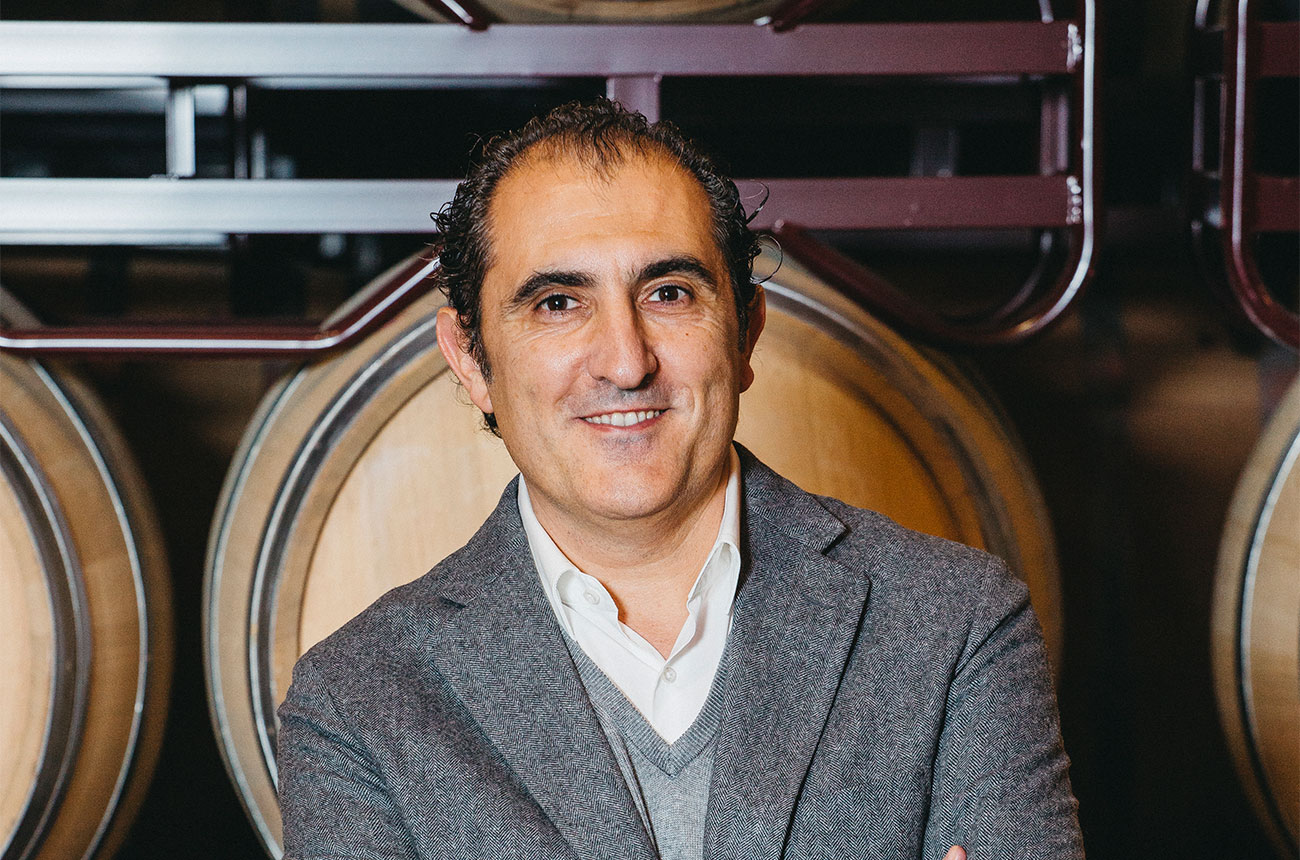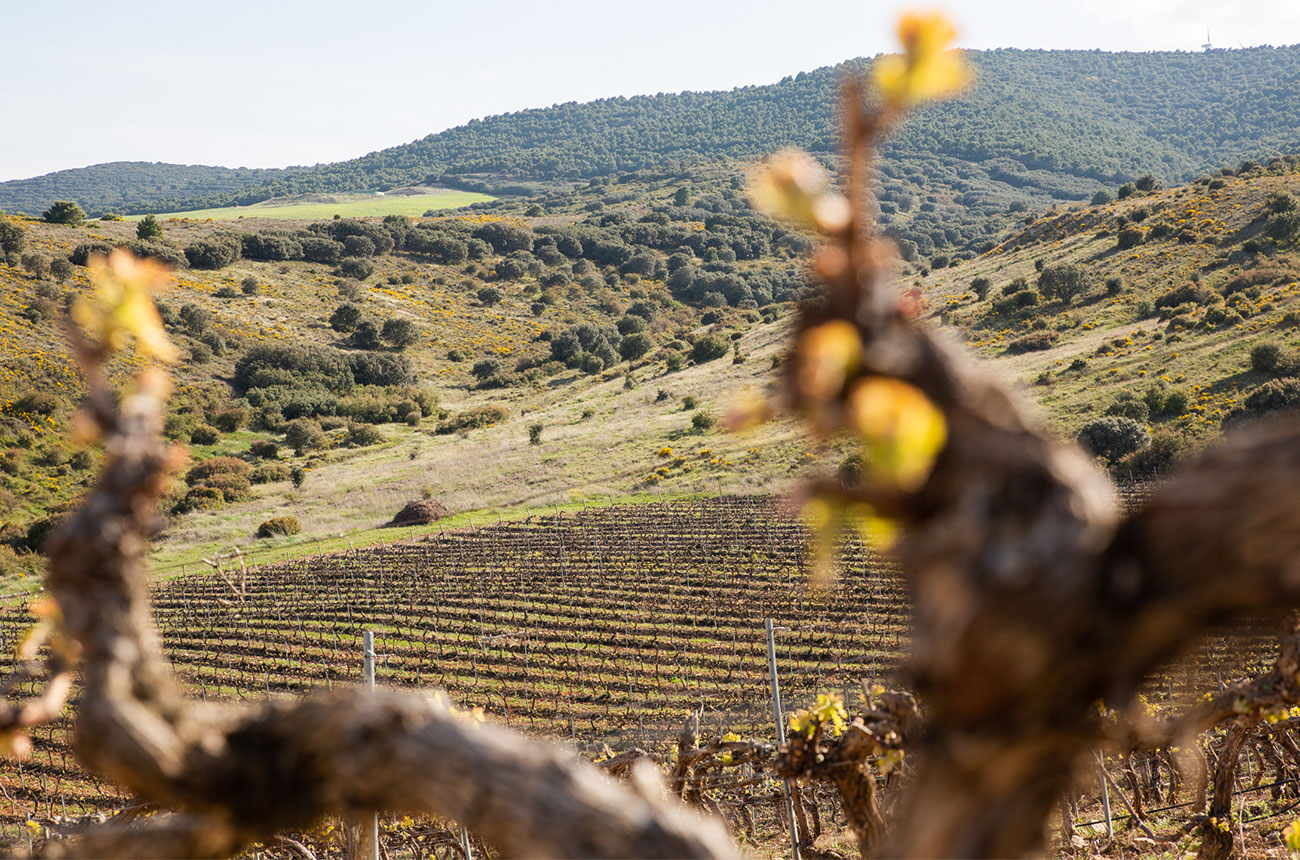In a viticultural first Rioja’s Ramón Bilbao, the University of Bordeaux and renowned French barrel-maker Demptos are joining forces to study how grapes grown at high altitude mature and develop over time.
Amor with altitude
Ever since he joined Ramón Bilbao back in 1999, Rioja born-and-bred Chief Winemaker Rodolfo Bastida has fallen more and more in amor with altitude for growing grapes with the fresh red fruit aromas and flavours that he wants in his wines.
As on-trend as vineyards at altitude may be in countries like Argentina, Rioja’s winegrowing has traditionally been focused on the valley floors. However, with increasing awareness of the effects of climate change (“The grape harvest has been brought forward by around 20 days in the last 70 years,” says Rodolfo) and a hunger for fresh, elegant red wines, Ramón Bilbao’s vinous adventures are taking them to the higher heights of the region.
The purchase of a “dream parcel” of vines high in the Monte Yergamountains (which reach up to over 1,000 metres) gave Ramón Bilbao its first vineyard in Rioja Oriental, and a natural HQ for a research programme dedicated to digging deep into exactly what altitude means for the Ramón Bilbao wines.
Rodolfo and his Head of Innovation, Rosana Lisa, have dedicated two plots in the 90-hectare vineyard to this programme: one at 520m above sea level, and one 200 metres higher, both planted with Tempranillo and both going to 225-litre oak barrels for maturation after malolactic fermentation.
“Growing at altitude involves a degree of risk, but for me the benefits outweigh this – particularly when you’re looking to tackle the effects of climate change on our viticulture,” explains Rodolfo. “The higher up you go, the poorer the soil becomes due to rain erosion and this is good for viticulture. The wind also gets stronger, but this helps keep grapes disease-free and gives an extra freshness and fruit dimension to the grapes. Light intensity is another key factor here – photosynthesis is more efficient in the plants, so they are able to develop more aromas and taste than those at lower altitudes.”

Working together
To discover exactly how higher altitudes affect grapes and the wines produced, Ramón Bilbao’s Innovation Team has started working with the Research Department of famous French cooperage Demptos and the University of Bordeaux.
“This is the first research project in Spain to study what the best ageing conditions are for wines from vines grown at altitude,” explains Rosana Lisa, Head of Innovation and Assistant Winemaker at Ramón Bilbao. “By studying two vineyards whose only difference is height, we examine exactly what influence this factor has on the final wine. We have already identified an increase in tannins and greater phenolic maturity, but this collaboration means we can go into even more detail.”
The study will also investigate other factors such as colour stabilisation, tannin and anthocyanin levels, oxidation and the differences in evolution of the wines. “Continuous analysis and tasting as the wines age will help us understand how each needs to be treated in the winery, and how we can help the specific personality of the vineyard to shine through,” adds Rosana Lisa.

The journey starts here…
For Ramón Bilbao, all this work has a single aim in mind: to better understand its vineyards at altitude and the resulting character of the wines produced there. Wines which little by little will reveal the mysteries and specifics of mountain viticulture…
Complementary studies
Ever adventurous, Ramón Bilbao doesn’t stop here… The inquisitive producer is also looking at how different treatments help protect the berries from the increased ultra-violet rays during ripening, or how a bio-filter developed at the University of La Rioja can help control polyphenol synthesis. Monte Yerga is proving the perfect place for these studies, specifically in an eight-hectare plot at 550-metres above sea level.
Another study is also looking at the use of black and white stones in the vineyard to help boost the grapes’ ripening process by reflecting, and soaking up heat from, sunlight at cooler temperatures.
“We are seeing some interesting results here already – for example one of the treatments increased the grapes’ colour intensity, and another led to a definite improvement in the acidity of the fruit. Lots and lots here for us to delve further into over the next few years,” concludes Rosana.


